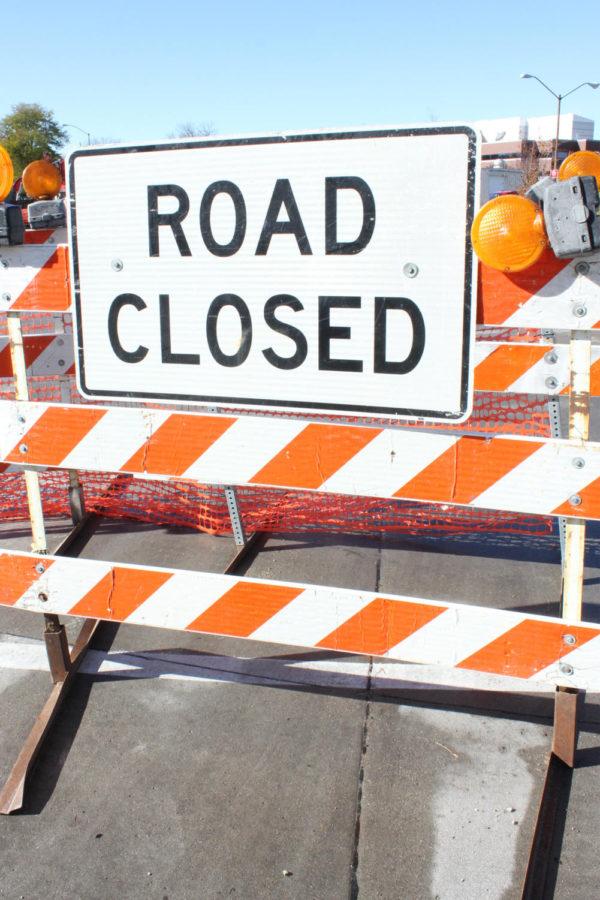Bridge Engineering Center seeks better methods of bridge construction
This construction, located directly off of Wallace Road on campus is showing to be a hindrance to Iowa State staff and professors. The engineers working with the DOT hope to cut down time on projects such as these.
October 31, 2013
The ISU Bridge Engineering Center, which conducts research on the evolution and improvement of bridge construction, will be working with the new U.S. Department of Transportation Center on projects in the near future.
ISU students and faculty have studied, developed and tested newer more efficient ways of bridge construction for years. Their work has resulted in the forming of many new state policies that dictate the use of one such method, dubbed Accelerated Bridge Construction.
“Normally to build a new bridge where an existing one was, they close the road for six to eight months,” said Brent Phares, director of the Iowa State Bridge Engineering Center. “The idea behind accelerated bridge construction is to reduce that to something much shorter.”
Recently the center worked along side the DOT on a bridge replacement project outside of Massena, Iowa. In order to minimize the time for which the road was obstructed, the “accelerated construction” methods were utilized.
“The road would have been closed for eight to nine months,” Phares said. “Instead it was closed for nine days.”
Instead of demolishing the existing bridge to start, they built the replacement directly adjacent to it. Once construction on the new bridge was concluded, the old structure was simply torn down and the new one slid into place.
The detour near Massena stretched for 17 miles. Phares said such detours, while they might not seem highly significant, carry what he calls “societal costs.”
These costs are primarily derived from the extended driving time caused by the detour. The longer the cars are running, more greenhouse gases are emitted, cars will need to have its tank refilled more frequently, not to mention the mere inconvenience to people who regularly traverse the route on a schedule.
The grant awarded to the center by the DOT is a two-year award, which amounts to $2,828,200. Researchers for the center are required to produce an additional $400,000 in matching grants, which comes to $1.2 million in funding for the center’s research.
Phares said the center hopes to find six graduate students from Iowa State working on projects which will use this funding per year and that the grant will remain in effect. The grant will cover those prospective students’ tuition as well as their monthly stipends for their work with the center.
“We’ll probably also involve some undergraduate research assistants on an as needed, project-by-project basis,” Phares said, “for things such as lab work or data reduction.”
Phares said they might involve undergraduate research assistants for lab work or data reduction on an as needed basis.
“Anytime you can bring more researchers to the table you can expect a better product,” said Matt Rouse, bridge engineering specialist for the center.

















